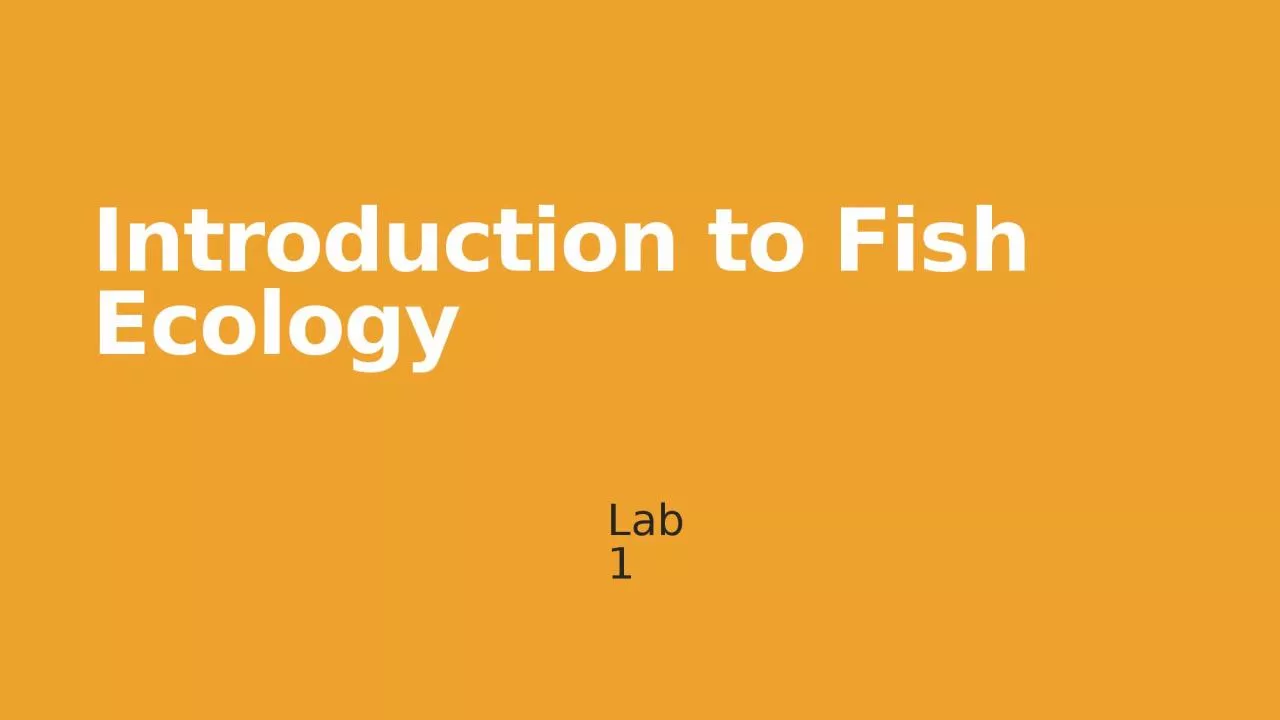

Lab 1 Fish Ecology is the study of the processes influencing the distribution and abundance of fishes the interactions among fishes and the interactions between fishes with their environment ID: 1047833
Download Presentation The PPT/PDF document "Introduction to Fish Ecology" is the property of its rightful owner. Permission is granted to download and print the materials on this web site for personal, non-commercial use only, and to display it on your personal computer provided you do not modify the materials and that you retain all copyright notices contained in the materials. By downloading content from our website, you accept the terms of this agreement.
1. Introduction to Fish EcologyLab 1
2. Fish Ecology: is the study of the processes influencing the distribution and abundance of fishes, the interactions among fishes, and the interactions between fishes with their environment.
3. Divisions of Ecology:- Auto-ecology or species ecology: the study of individual species, i.e. behaviour, adaptation and interaction of a species in its environment.- Synecology or community ecology: the study of communities and their interaction with the environment.
4. A fish:Fish are gill-bearing aquatic animals that lack limbs with digits. Included in this definition are the living hagfish: 1- lampreys and Hagh fishes.2- cartilaginous, and3- bony fish. As well as various extinct related groups.
5. Fish species diversity is divided in to:1- Marine (Oceanic) ecosystem: 70% of the earth covered by salt water, and 58% of all Fish species are marine,2- Fresh water ecosystem: 1% freshwater of all water bodies, and 41% of fishes are freshwater fishes, 3- Both Diadromes, Euryhaline: moving regularly between ocean and freshwater systems, only 1% of fishes are of this group. Marine biodiversity generally higher than freshwater.Fish are very different in appearance, size and shape. This all depends on the environmental factors that it lives in.
6. Environmental factors that effect on Fish Diversity and Abundance:1- Abiotic components: which including:-- Climatic factors: like temperature, Oxygen, light level and water.- Edaphic or soil factors: like mineral matter, salinity, organic matter.2- Biotic components: which including:-- Producers (autotrophs or self-feeders): like green plants that having chlorophyll and producing food by photosynthesis.- Consumers (heterotrophs): like all living organisms do not have chlorophyll, for example Human, birds …etc.- Decomposers (saprotrophs): mainly include bacteria and fungi that make disease for fish in polluted water Fish play an important role in aquatic ecosystems and have long provided food, employment, business opportunities, and recreation.
7. Questions?